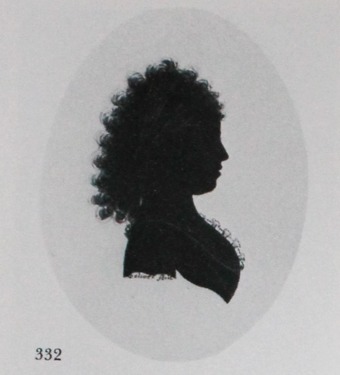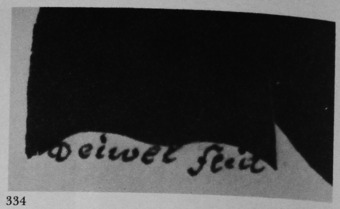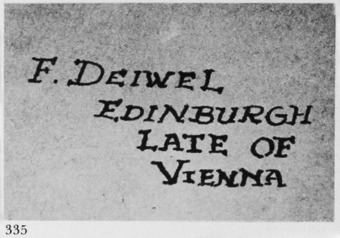Deiwel, Franz (McKechnie Section 1)
I have included Deiwel in this book because, though he was an Austrian artist, he is known to have worked in Edinburgh for a short period before his death. Jackson mentions him (Dictionary), recording profiles by him of two possibly Austrian subjects: Councillor von Scharff and his wife Thérèse.
Franz Deiwel ('devil' in English) was born in 1748, possibly in Vienna, and is said to have become one of the leading silhouette artists in that city. He did, in fact, become Court Silhouettist to Francis II (1768-1835) of the Holy Roman Empire (from 1804, the Emperor Francis I of Austria). In the course of his duties, Deiwel took profiles of the Austrian royal family. They included his patron's eldest daughter, Maria-Louisa (b. 1791), who became the second wife of Napoleon Bonaparte, his eldest son, Ferdinand (1793-1875), who was to become the Emperor Ferdinand I of Austria, and his second wife, Maria Theresa, daughter of King Ferdinand of Naples. These portraits appear to have been taken in the early 1800s.
I have illustrated, as a typical example of Deiwel's style, a profile, dating from the early 1790s, of a young woman called E. Clementine. The profile was probably taken in Austria, where this surname is not uncommon. The other profile which I have illustrated is of a George Symes, taken at some time during the years c. 1807-1810 in Edinburgh.
It is on account of this silhouette, which proves that Deiwel visited Britain, that he is included in this book. He is known to have died in 1810, and if his death took place in Austria, he must (to judge from Symes' dress on the profile) have died soon after returning from his visit to Edinburgh.
Three volumes of examples of Deiwel's work are preserved in a museum in Brno, Czechoslovakia.

E. Clementine
Cut silhouette, with detail painted in white
Early 1790s
3½ x 2½in./90 x 64mm.
Frame: pearwood, with verre églonisé
Taken in Austria; signed by the artist. The contour of the bust-line is typical of Deiwel’s work at this period.
J. A. Pollak collection

George Symes
Cut silhouette, painted
c. 1807-1810
4 x 3in./102 x 77mm.
Frame: giltwood
Signed by the artist. Cut and painted in a plainer style than the silhouette shown in 332. The frame bears the trade label of a frame-maker in Dundee (See 46).
Author’s collection

Detail from Franz Deiwel’s silhouette of E. Clementine (332). Deiwel’s signature is below the bust-line termination. The slash indicates the outline of the sitter’s arm.
J. A. Pollak collection

Inscription by Franz Deiwel on the reserve of the silhouette illustrated in 333.
Author’s collection
